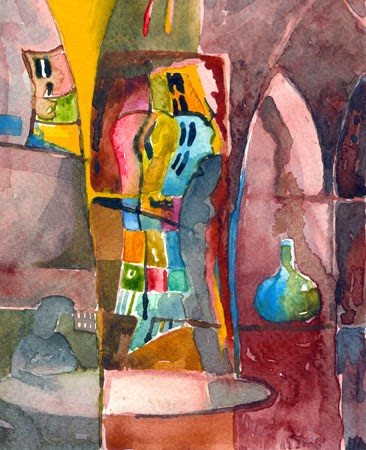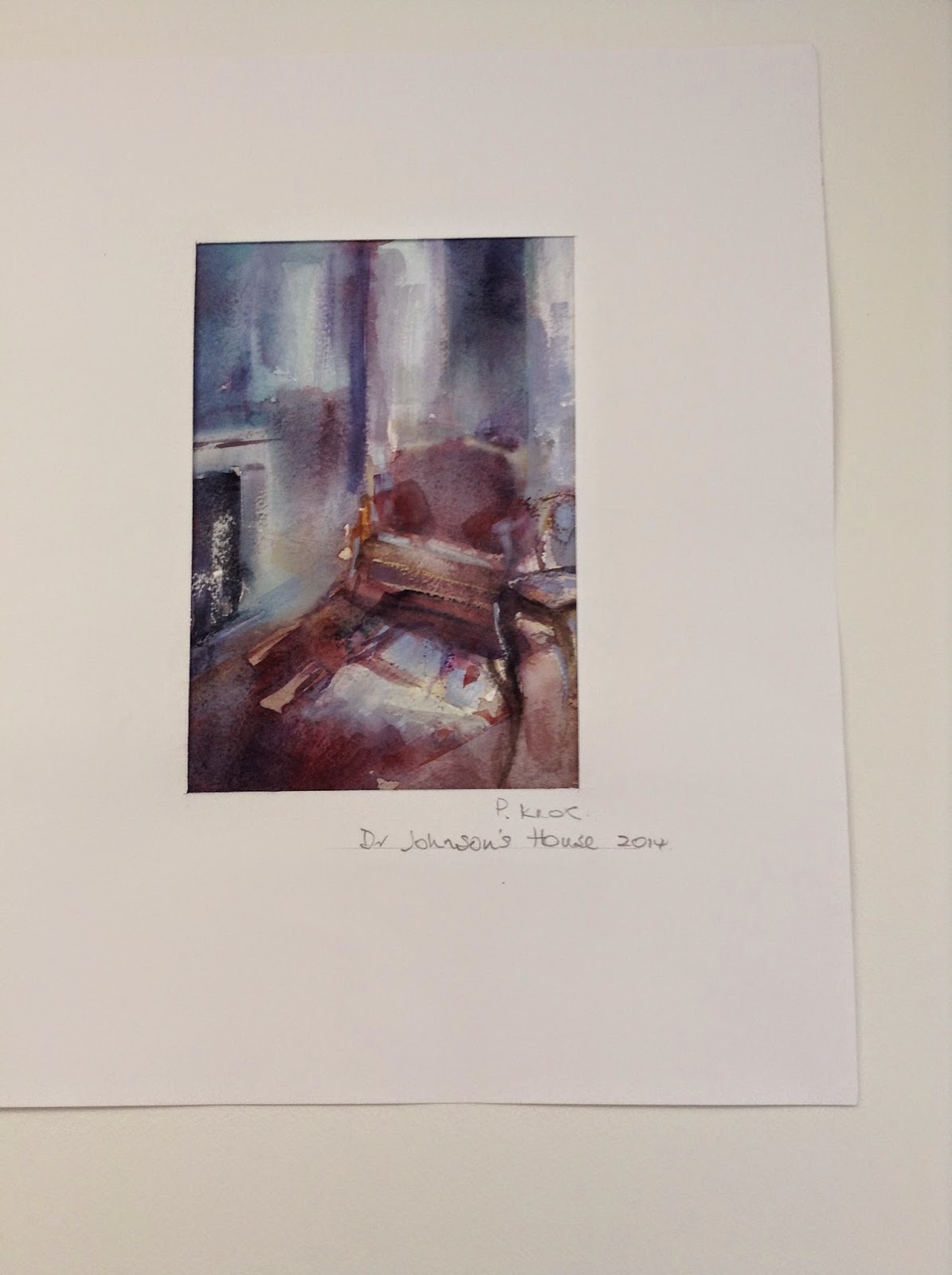5 people turned up, and here's what they produced for those of you who weren't there..............
PENNY
 |
| Penny's drawings |
Her first drawing (lower left) concentrated on the huge and slowly-turning propeller. She wanted to give it the feel of moving, and tried things like overlapping the window, breaking the edges etc. The comment was that the propeller looked quite organic compared to the hard diagonals around it, and maybe there was room to play with that idea.
then her next drawing (top left) was done in th Queen's House, and we all loved clever touches like the shard of black and white tiling on the floor, and the way she'd imported bits of paintings on display (old war ships) into the more formal space.
Then she did her 3rd drawing, which tackled the tricky issue of clouds and nature. The formalised texturing of the trees etc. is very effective, but we all felt that the overlapping clouds looked a bit alien to the rest of the drawing. Maybe they need handling in the same manner?
PAT
 |
| Pat no. 3 |
 |
| Pat no. 2 |
 |
| Pat no 1 |
Pat spent some time looking out at the trees in Greenwich Park, which were strongly back-lit to create dramatic darks (sheet no. 1). I was a bit concerned that she might not have enough information on 'tree-ness-, but we'll see what she pulls out of the bag! Then she went and sat in the cold, and did the drawings on sheet 2, again looking across the park. Sheet no. 3 was a bigger drawing, containling lots of ideas to be played with, and whittled down.
We talked about thumbnail drawings, and how they need to be different QUICK compositional ideas as to the possibilities of each drawing, not just smaller 'complete' drawings.
GERALD
 |
| Gerald 6 |
 |
| Gerald 5 |
 |
| Gerald 4 |
 |
| Gerald 3 |
 |
| Gerald 2 |
 |
| Gerald 1 |
Gerald produced some fine drawings (sorry - all of these seem to be coming out in reverse this time!)
No. 2, with the Royal Barge and its upright oars creating a rhythmic tension was a beauty, and very much reflected the ideas in no. 1, with the pattern of trees outside. Isn't it interesting how two completely different subjects give the same visual stimulus?
Sheets no. 3 and no. 4 were all looking at the business-end of some big machine shaft. we all felt that the one on the bottom half of sheet no. 3 was wonderful, where the description of the shaft has been reduced right down to just a circle, echoed by the subtle curve above it.
He hopes to somehow combine this with the squating figure drawn on sheets nos 5 & 6, so make a composite painting of some sort - good luck Gerald!
ELIZABETH
 |
| Elizabeth 6 |
 |
| Elizabeth 5 |
 |
| Elizabeth 4 |
 |
| Elizabeth 3 |
 |
| Elizabeth 2 |
 |
| Elizabeth 1 |
I think Elizabeth had a very useful day. She devoted herself to exploring the opposites of tone and colour. The tonal drawings were done with just b&w media, creating some very strong statements, again looking at the back-lit trees.
We all especially liked no. 1, with its Paul Nash-esque power, and the strip of light cutting across the dark - lovely.
Then, she used some coloured brush-pens which gave her no option but to use very direct colour to make here drawings. The colours felt a bit shocking to her at first, but I think its a great thing to do for a while, and just see what strong statements emerge - there's no room for fiddling about in the middle!
MAGGIE
 |
| Maggie no. 1 |
 |
| Maggie no. 2 |
 |
| Maggie no. 3 |
Maggie had a more indecisive day - not really sure what she wanted. She started off (no.1 - bottom) in the Queen's House, doing a very powerful tonal piece, looking through from one dark room to another space. however, it didn't really fulfill her need to 'tell another story'. Her next drawing (no. 1 - top) was very inventive, looking at a group of statues, and rearranging their relative positions to create this striking and strange drawing with the pointing finger. No. 2 was something she explored briefly, but it wasn't hitting the spot for her. Then, no 3 was based on a wall-mounted display of ship figureheads, and she has again played with the narrative, and created something which provokes questions - and I love the space they're looking into.
She is hopeful that ideas will evolve over the next couple of months!
Well done everyone. Next time (Feb 17th) will be without me, so let's see how these ideas develop onwards.







